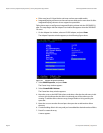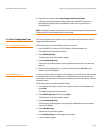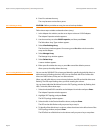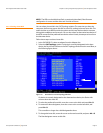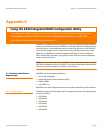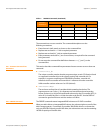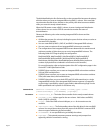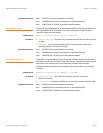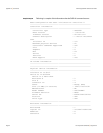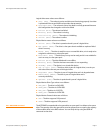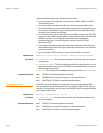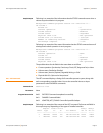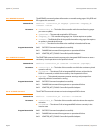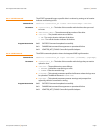Appendix A: | Commands SAS2 Integrated RAID Solution User Guide
Page 34 LSI Corporation Confidential
| August 2010
The disk identified by the first Enclosure:Bay on the command line becomes the primary
disk drive when you create an Integrated Mirroring (RAID 1) volume. If the controller
resynchronizes the disk drives, the data on the primary disk drive becomes available
when you access the newly created volume.
When the IR firmware creates a RAID 1 volume, it starts a background initialization
of the volume. You can use the STATUS command to monitor the status of
the initialization.
Observe the following rules when creating Integrated RAID volumes and hot
spare disks:
All disks that are part of a volume, including hot spares for that volume, must be on
the same SAS2 controller.
You can create RAID 0, RAID 1, RAID 1E, and RAID 10 Integrated RAID volumes.
You can create a maximum of two Integrated RAID volumes per controller.
The configuration of the Integrated RAID firmware determines the maximum and
minimum number of drives that you can use in Integrated RAID volumes. The
following fields of IOC Page 6 specify the configuration:
MaxDrivesRAID0, MaxDrivesRAID1, MaxDrivesRAID10, MaxDrivesRAID1E
MinDrivesRAID0, MinDrivesRAID1, MinDrivesRAID10, MinDrivesRAID1E,
MaxVolumes, MaxPhysDisks, MaxGlobalHotSpares, MaxPhysDisks (maximum
number of physical drives combined in all volumes on the controller)
For more information, refer to the description of the IOC configuration pages in the
Fusion MPT 2.0 MPI Specification Guide.
SAS2IRCU does not allow you to create an Integrated RAID volume that combines
SAS and SATA hard disk drives.
SAS2IRCU does not allow you to create an Integrated RAID volume that combines
SSDs (solid-state drives) and hard disk drives.
SAS2IRCU does allow you to use both SATA and SAS solid-state drives in a single
Integrated RAID volume, if the Integrated RAID firmware supports it. Support for
such a mixing is specified by values in static fields in Manufacturing Page 4 in the
MPI2 specification and is specific for SSD drives only.
Command Line sas2ircu <controller_#> create <volume_type> <size>
{<Enclosure:Bay>} [VolumeName] [noprompt]
Parameters <controller_#> – The index of the controller for the newly created volume.
<volume_type> – Volume type for the new volume. Valid values are RAID0,
RAID1, RAID10, or RAID1E.
<size> – Size of the RAID volume in Mbytes, or MAX for the maximum size
available.
<Enclosure:Bay> – The Enclosure:Bay value of the disk drive for the new RAID
volume. You can get these values from the output of the DISPLAY command. DOS
does not support addressing by Enclosure:Bay.
VolumeName – A user-specified string to identify the volume.
noprompt – This optional parameter prevents warnings and prompts from
appearing while the command is running.



